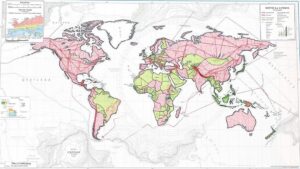Tracing Early Cotton Plantation Locations for Agricultural Artifacts
Tracing Early Cotton Plantation Locations for Agricultural Artifacts
The historical significance of cotton plantations in the economic and social fabric of the United States cannot be overstated. From the late 18th century through the early 20th century, the cultivation of cotton was central to the agricultural economy, particularly in the Southern states. This article examines the early cotton plantation locations and the agricultural artifacts unearthed during archaeological investigations, offering insights into the practices, technologies, and labor systems of that era.
Historical Context of Cotton Plantations
The emergence of cotton as a dominant cash crop can be traced back to the invention of the cotton gin by Eli Whitney in 1793. This invention revolutionized the production process, allowing for greater efficiency in separating cotton fibers from seeds. By the early 19th century, particularly post-1820, the Southern states became increasingly reliant on cotton farming, spurring the expansion of plantations.
According to the U.S. Census of 1860, there were over 250,000 slaves working in cotton production, indicating the scale at which this agricultural system operated. Much of this growth can be observed in locations such as Mississippi, Alabama, Louisiana, and Arkansas, where the ideal climate and soil conditions supported extensive cotton cultivation.
Methodology for Tracing Plantation Locations
Identifying early cotton plantation locations requires a multi-disciplinary approach that includes historical documentation, archaeological surveys, and geographical analysis. Significant resources for this analysis are the following:
- Historical Records: Plantation owner records, tax documents, and census data provide vital clues about plantation sites.
- Archaeological Excavations: Systematic digs can uncover artifacts ranging from farming tools to domestic implements that showcase the daily lives of those working on these plantations.
- Geographical Information Systems (GIS): Modern technology enables researchers to map and analyze spatial distribution patterns of known plantations.
Key Locations of Early Cotton Plantations
Several regions in the Southern United States have been identified as significant cotton-producing areas. Notable locations include:
- Plantation Houses in Mississippi: Known for their grand architecture, many plantation houses such as the Waverly Plantation (established in the 1830s) serve as important cultural landmarks.
- Delta region of Louisiana: This area became a hotspot for cotton production, with extensive land originally cultivated by enslaved laborers.
- Arkansas River Valley: A region characterized by fertile land, it became one of Arkansass most important cotton-producing areas in the mid-1800s.
Artifact Types and Their Significance
Artifacts recovered from cotton plantation sites provide valuable insights into agricultural practices, social structures, and technological advancements of the period. Key categories of artifacts include:
- Farming Uses: Tools such as plows, hoes, and cotton gins reveal the techniques used in planting and harvesting cotton.
- Household Items: Domestic artifacts like pottery and cooking utensils give context to the daily lives of enslaved individuals and plantation owners.
- Documentary Evidence: Written records, such as diaries and invoices, provide personal accounts and operational details about the plantations.
Challenges in Artifact Recovery and Preservation
Despite the wealth of information that agricultural artifacts can provide, there are numerous challenges faced by archaeologists and historians in recovering and preserving these items:
- Site Disturbance: Modern development, erosion, and agricultural practices can disturb archaeological sites, making recovery efforts difficult.
- Artifact Degradation: Many artifacts are subject to the effects of time and environmental conditions, impacting their integrity and the information they can yield.
- Funding and Resources: Archaeological digs often require significant funding, which may not always be available.
Real-World Applications of Findings
The findings from the study of agricultural artifacts related to cotton plantations have real-world applications in various fields:
- Education: Findings can be integrated into educational programs, providing a historical perspective on agriculture and social structures.
- Cultural Heritage Preservation: Understanding the historical significance of cotton plantations aids in preserving cultural heritage and informs discussions on racial and social justice.
- Tourism: Heritage tourism may benefit from enhanced knowledge of plantation history, fostering economic opportunities for local communities.
Conclusion
The tracing of early cotton plantation locations and the subsequent recovery of agricultural artifacts serves as a window into the socio-economic landscape of pre-Civil War America. By combining historical records with archaeological methodology, researchers can achieve a more nuanced understanding of the complexities surrounding cotton production, slavery, and regional development. Continued efforts in this field are essential for honoring the legacy of those who toiled on these lands and for educating future generations about the profound impacts of agricultural practices in American history.
In summary, the study of agricultural artifacts from early cotton plantations not only contributes to historical scholarship but also encourages a critical engagement with the past. It is essential for both academic communities and the public to advocate for the preservation of this heritage, ensuring that the stories of those involved in this pivotal industry are recognized and remembered.


